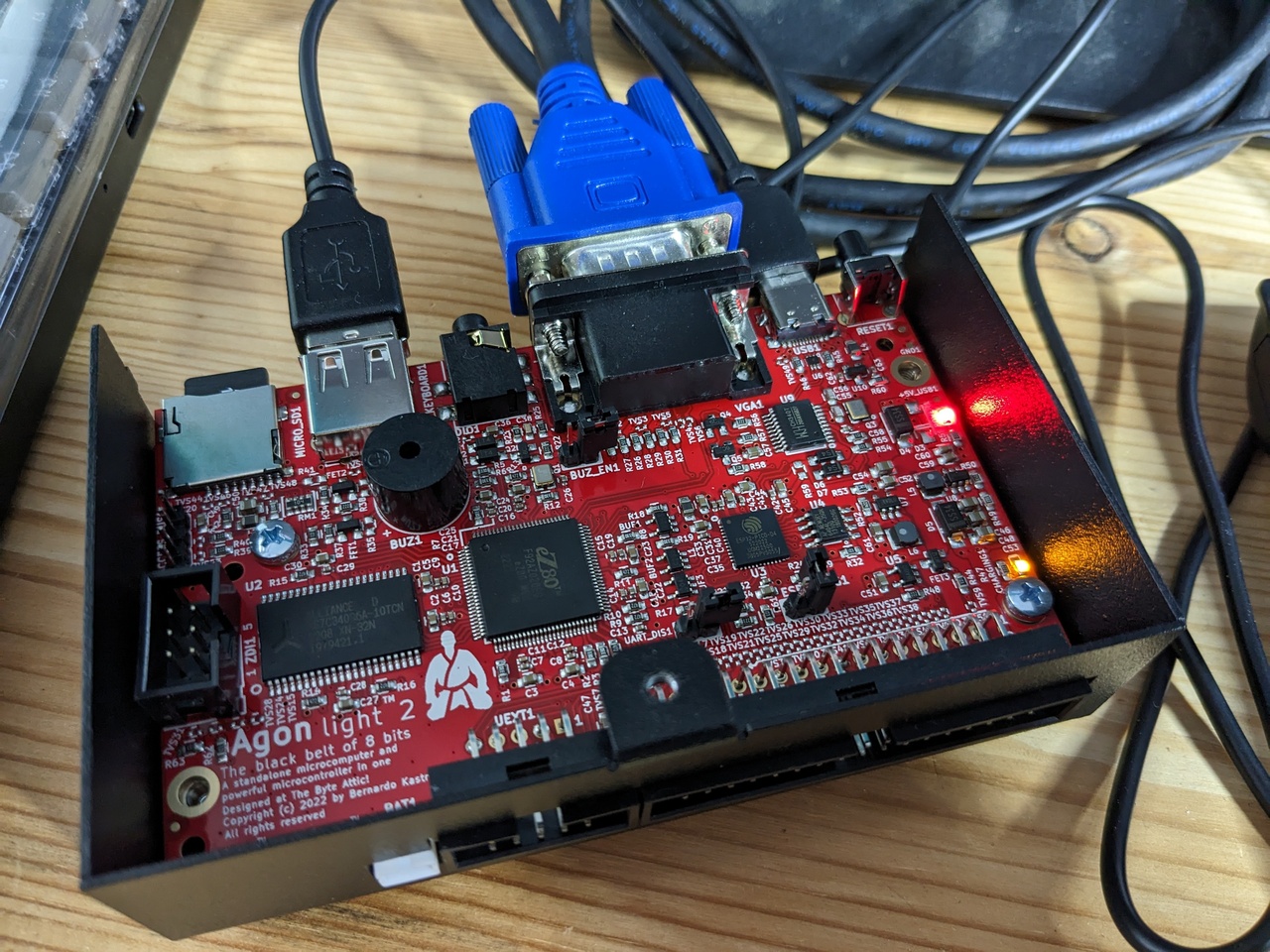A wild Agon Light appears
I watch a lot of Youtube videos about retro computing. I am not a huge retro computing person myself, after all, I gave away all of my old computers to a friend when I last moved (they were just taking up shelf space in our basement), but I am a fan.
Every now and then, when watching these videos, you come across some new “old” computer projects, like the Retrogames TheC64 (which is, unfortunately, essentially just an emulator running on an SBC like thing), the ZX Spectrum Next and then completely new designs like the Commander X16. If you look deeper, there are a ton of these projects, but a lot of them have really small communities or are just someone's pet project. This seems to now radically change for one particularly interesting platform: The Agon Light, designed by Bernado Kastrup aka TheByteAttic, Dean Belfield and Jeroen Venema. One of the reason their community is currently exploding is because Olimex, the Bulgarian electronics powerhouse, decided to build a cost optimised version of it you can buy for 50 EUR.
Introducing the Agon Light

The Agon Light is a very interesting platform. It uses a modern derivate of the Z80 processor that runs at much faster speeds. But that's not even the most interesting thing about it. Because it runs an ESP32 (yes, that big brother of the ubiquitous ESP8266 internet-of-shit microcontroller) sans the antenna (So no built in Wifi, unfortunately) as the universal I/O controller, sort of. The ESP32 runs a software called VDP (Video Data Processor) that is based on an almost magical open source project called FabGL that, among other things, implements a full graphics processor capable of running VGA output. It also does sound and is responsible for keyboard input as well.
In other words, the ESP32 is AgonLight's VIC/SID/CIA (you can probably tell I grew up with a C64 as my main machine?) and the cool thing about it is that it's all defined in software. Basically, a very cheap version of what most projects try to solve with FPGAs.
The Agon Light runs BBC Basic, a very good basic dialect, ported over from 6502 assembly to Z80 by R.T.Russell and adapted by Dean Belfield to the AgonLight.
Keyboard Error, press any key to continue...
The biggest issue with the AgonLight currently seems to be to find a compatible keyboard, it only supports PS/2 keyboards. Interestingly, the Olimex variant (which I have) comes with a USB port, so it only supports keyboards that have a USB plug but can fall back to PS/2 (which was a very helpful feature of USB keyboards back when they were uncommon).
The Agon Light software side is currently improving quickly. You can now flash the Z80 ROM in situ (no need for Zilog tooling anymore) and the ESP32 can be updated via the USB port (otherwise only needed to power the device) via the Arduino IDE.
People are working on getting various games to run on the machine. People have made the VDP work with CP/M as well which opens up a huge world of retro software.
And me? I have a couple of ideas, which I'll list here for future reference:
MIDI
The Agon Light exposes (similarly to the RaspberryPI) GPIO pins through a pinheader. Among other things, this exposes the second UART of the eZ80 (the first one is used to communicate with the ESP32) which should be MIDIfiable with a fitting interface. I have already looked up how to build such an interface and ordered a couple of missing parts. On the software side, the second UART is already exposed via the system software (called MOS) and should be callable via BASIC, probably with a bit of inline assembler. All in all, this should be doable in 1-2 days.
After that it would be interesting to try to build something on top of that, like maybe a simple MIDI based tracker or so.
Sound
If I can, I would love to help with the software side of exposing more of the sound features of FabGL in the VDP so that it's accessible from the main processor. I assume that designing an interface that will allow expressiveness while not overloading the serial bus will be tricky, but it's worth a shot. There are people already working on that so'll try to chime in there if I can find the time and I think I have something to contribute.
A simple sprite editor
I would love to dip my toes back into BASIC to see if I can build a simple sprite editor. My idea would be to build something similar to the tooling Pico-8 has built in, sans mouse support, of course.
Conclusion
This looks like a fun retro computer. A throwback to simpler times. An interesting target for experiments. Let's see how it goes.